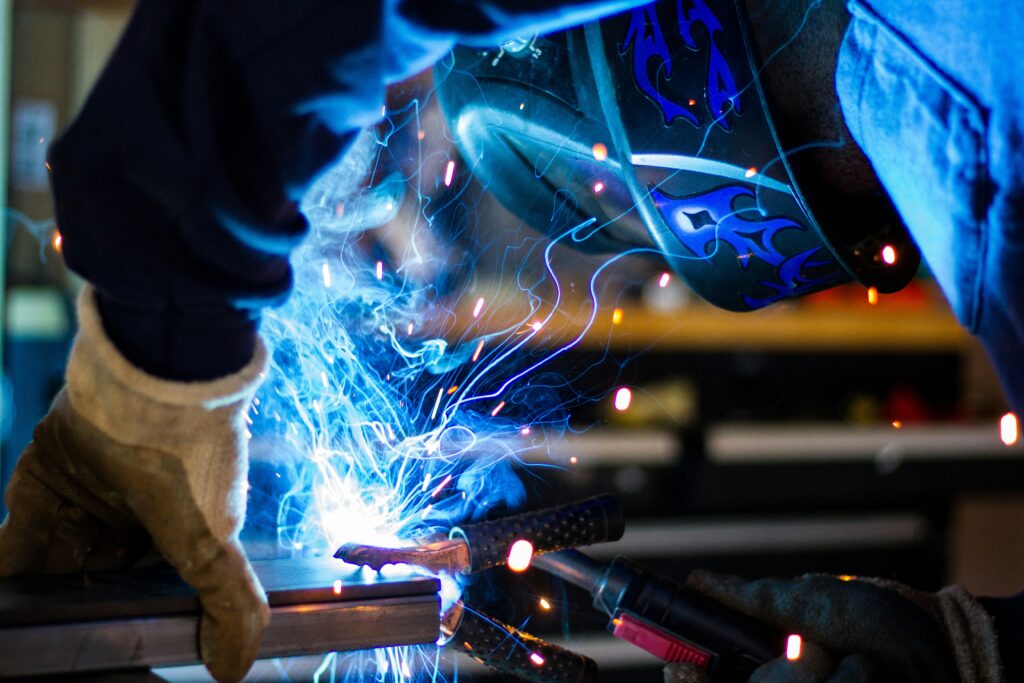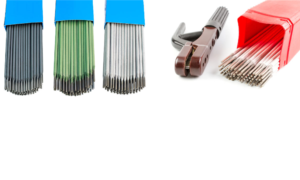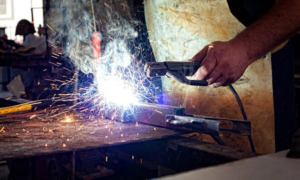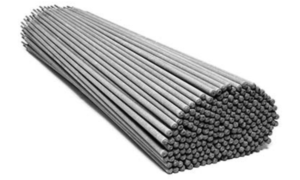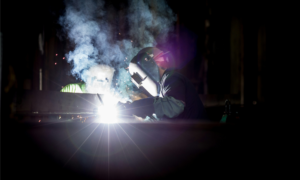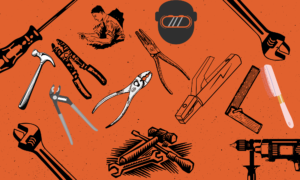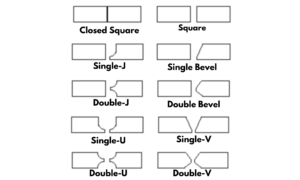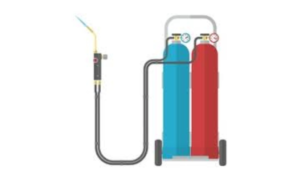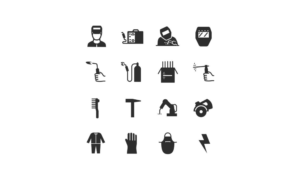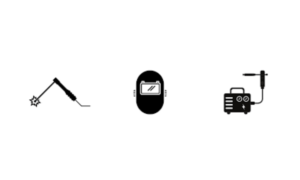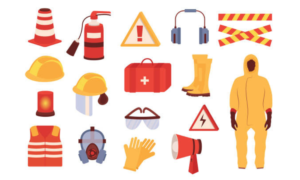Gas Tungsten Arc Welding (GTAW) is a welding process using a tungsten electrode. It produces high-quality, precise welds on a variety of metals.
GTAW, commonly known as TIG (Tungsten Inert Gas) welding, is a highly skilled welding technique famed for its ability to produce strong, clean welds with a controlled heat input, making it ideal for delicate and precise metal joining. This process is widely used in aerospace, automotive, and artistic applications, offering versatility and superior weld quality.
Essential for GTAW is the use of a non-consumable tungsten electrode and an inert shielding gas, typically argon or helium, which protects the weld area from atmospheric contamination. Mastery of GTAW requires significant skill and steady hands, as it involves coordinating the electrode, the heat source, and the filler material (if used) simultaneously.
The Essence Of Gas Tungsten Arc Welding (gtaw)
Tracing The Roots Of Gtaw
Gas Tungsten Arc Welding has a rich history that began in the 1930s. It emerged as a solution for welding non-ferrous metals like aluminum and magnesium, which were becoming more important in industries such as aerospace. Over time, GTAW has evolved with technological advancements, solidifying its role in high-precision welding applications.Key Characteristics That Set Gtaw Apart
- Non-Consumable Electrode: A tungsten electrode creates the arc but does not melt into the weld, ensuring cleanliness and control.
- Inert Gas Shield: Argon or helium protects the weld area from atmospheric contamination.
- Versatility: GTAW works on more metal types and at various thicknesses than many other methods.
- Superior Quality: It produces high-quality, clean welds with minimal splatter.
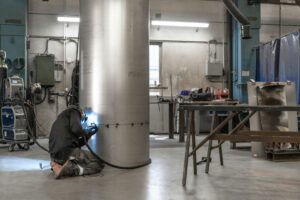
Equipment Essentials For Gtaw
Power Supply: Constant Current Systems
For GTAW, power supply dictates performance. Constant current (CC) systems are vital, providing stable amperage despite fluctuating voltages. GTAW relies on direct current (DC) for steel and alternating current (AC) for aluminum. Consider these factors:- Output type — AC, DC, or both.
- Amperage range — Fits the thickness of materials welded.
- Controls — Ensures precise parameter adjustments.
- Foot pedal — Allows for hands-free amperage control.
Tungsten Electrodes: Material And Shape Impact
Electrodes are GTAW’s defining elements. Tungsten, a robust and heat-resistant material, is shaped to focused arcs and cleaner welds. Different jobs need various electrodes:| Material | Usage |
|---|---|
| Pure Tungsten | AC welding for softer metals like aluminum. |
| Thoriated | Common for DC welding — offers longevity. |
| Lanthanated | Flexible, for both AC and DC operations. |
| Ceriated | Low amp welding — reduces burn-off risk. |
Shielding Gases: Purpose And Types
Shielding gases protect molten welds from contaminants. Argon — pure or mixed with other gases — is common due to its inert nature. Helium blends provide deeper penetration on thicker materials. Select based on your project:- Argon — Ideal for most applications, especially non-ferrous metals.
- Helium mixes — Boost heat input for thicker sections.
- Hydrogen mixes — Increase weld pool fluidity.
Mastery Through Technique
Skillful Electrode Manipulation
A steady hand and a keen eye are crucial for skillful electrode manipulation. The goal is to maintain a consistent arc length, which directly affects weld quality. Masters of this craft can control the electrode with such precision that flawless welds become second nature. Key points to remember:- Maintain a steady hand to ensure a stable arc.
- Adjust your position smoothly to avoid arc flicker.
- Use your wrist to guide the electrode along the joint.
The Fine Art Of Filler Feeding
Adding filler metal is a delicate operation that requires rhythm and timing. Expert welders know precisely when and how much filler metal to introduce. This expertise ensures the joint does not become brittle or weak. Techniques include:- Dip the filler rod in and out of the pool in a symmetrical pattern.
- Match the filler addition to the size of the weld pool.
- Ensure a smooth and continuous fill along the seam.
Controlling Heat Input Precisely
Heat management is vital in achieving a top-quality weld. Managing the heat with the foot pedal is a ballet that the welder performs. The right amount of heat affects the weld’s integrity and appearance. Remember:| Technique | Effect on Weld |
|---|---|
| Lower Heat Input | Prevents burn-through and metal warping. |
| Higher Heat Input | Ensures better penetration and stronger welds. |
Common Materials And Applications
Adapting Gtaw For Different Metals
The GTAW process adapts to work with multiple metals and metal alloys. For each material, the welder must adjust the technique.- Aluminum: requires AC current to clean oxide layers.
- Stainless steel: benefits from DC current and argon gas for corrosion-resistant joins.
- Magnesium alloys: often welded using AC with a thoriated tungsten electrode.
- Titanium: calls for tight shielding gas coverage to prevent contamination.
Gtaw In Industrial And Artistic Domains
| Industry/Application | Why GTAW Fits Well |
|---|---|
| Aerospace | Requires robust, high-precision welds |
| Automotive | Ideal for lightweight metal strength |
| Art Sculptures | Allows for detailed, aesthetic joins |
| Shipbuilding | Ensures watertight, strong structures |
| Pipe welding | Used for high-pressure, leak-proof seals |
Overcoming Challenges In Gtaw
Addressing Common Defects
GTAW can produce some defects that affect weld strength and appearance. Lets fix these issues together.- Porous welds: Choose the correct filler and improve shielding gas coverage.
- Inconsistent weld bead: Keep a steady hand and maintain even travel speed.
- Tungsten inclusions: Avoid touching the workpiece with the tungsten electrode.
Strategies For Welding Thin Materials
Welding thin materials demands precision. Below are strategies to enhance outcomes with GTAW.- Use a lower amperage to prevent burn-through.
- Choose thin electrodes to focus the arc better.
- Apply heat quickly and evenly to avoid warping.
Mitigating Contamination Risks
Contamination in GTAW spells trouble. The welding area must remain clean and shielded. Here’s how:| Contaminant | Risk | Prevention Strategy |
|---|---|---|
| Oil and Dirt | Weak welds | Clean surfaces before welding. |
| Oxidation | Brittle joints | Use a back-purging technique. |
Advancements In Gtaw Technology
Automation And Robotics In Gtaw
The integration of automation and robotics into GTAW processes boosts productivity and consistency. Robotics ensures precision in repetitive tasks and complex joints. Shops can now take on projects with greater complexity and reduced error margins thanks to these advancements.- Robotic arms ensure steady electrode handling.
- Sensors adapt to changes in weld pools in real-time.
- Automated systems allow for 24/7 operation.
Developments In Filler Materials And Methods
New filler materials and application methods have emerged to tackle various welding challenges. Innovations include the use of non-consumable electrodes and specialized filler wire.| Filler Type | Benefits |
|---|---|
| Alloy-Enhanced | Improves strength and corrosion resistance |
| Nanoparticle-Infused | Enhances weld quality and durability |
Emerging Trends In Gtaw Processes
The GTAW landscape is continuously evolving. Noteworthy trends include pulse welding and digital control interfaces. Pulse welding improves control over heat input, reducing distortion. Digital interfaces simplify the welding process with user-friendly controls.- Use of alternating current (AC) for welding aluminum.
- Variable frequency controls for better arc stability.
- Advanced cooling systems for longer welding cycles.
Frequently Asked Questions Of Gas Tungsten Arc Welding
What Is Gas Tungsten Arc Welding Used?
Gas tungsten arc welding (GTAW), also known as TIG welding, is primarily used for welding thin sections of stainless steel and non-ferrous metals such as aluminum, magnesium, and copper alloys.
What Is Difference Between Gtaw And Tig Welding?
There is no difference between GTAW and TIG welding; GTAW stands for Gas Tungsten Arc Welding, while TIG is the acronym for Tungsten Inert Gas, both terms refer to the same welding process.
What Is The Difference Between Gas Metal Arc Welding And Gas Tungsten Arc Welding?
Gas Metal Arc Welding (GMAW) uses a continuously fed metal wire electrode and is commonly known as MIG welding. Gas Tungsten Arc Welding (GTAW), often called TIG welding, uses a non-consumable tungsten electrode. GMAW is faster but GTAW allows for more precision and control.
What Are The Disadvantages Of Gas Tungsten Arc Welding?
Gas tungsten arc welding (GTAW) has several disadvantages, including a slower welding speed, higher skill requirement, and generally higher cost compared to other welding methods. It also provides limited weld penetration and can be less effective on thicker materials.
Conclusion
Wrapping up, Gas Tungsten Arc Welding (GTAW) remains crucial for high-quality joins. Its precision and versatility make it ideal for critical applications. Embracing GTAW could elevate your welding projects, ensuring stronger, cleaner welds. Keep honing your skills to master this valuable technique.

